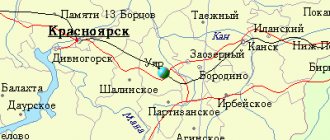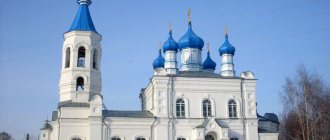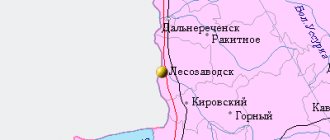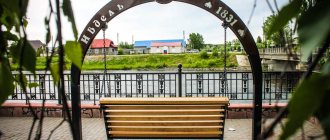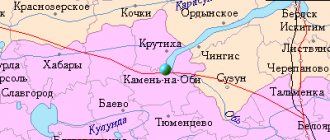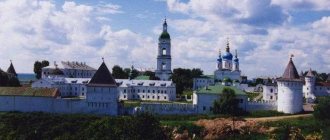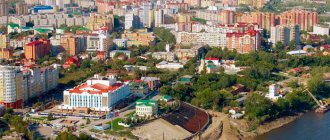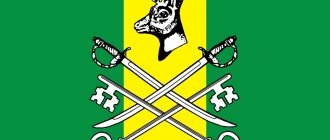| Coat of arms of Aleysk | |
| A country | Russia |
| Subject of the federation | Altai region |
| Urban district | Aleysk city |
| City with | 1939 |
| Coordinates | Coordinates: 52°30′00″ N. w. 82°47′00″ E. long / 52.5° north w. 82.783333° E. d. (G) (O) (I)52°30′00″ n. w. 82°47′00″ E. long / 52.5° north w. 82.783333° E. d. (G) (O) (I) |
| Based | 1913 |
| Square | 43.87 km² |
| Timezone | UTC+7 |
| Center height | 170 m |
| Vehicle code | 22 |
| Population | ▲29,491 [1] people (2011) |
| Chapter | Alexander Mikhailovich Merzlikin |
| Postal codes | 658130 — 658149 |
| Climate type | continental |
| OKATO code | 01 403 |
| Telephone code | +7 38553 |
Aleysk is a city (since 1939) in Russia, the administrative center of the Aleysky district of the Altai Territory.
Population 29.5 thousand inhabitants (as of January 1, 2011). The territory of the city is 4387 hectares.
Economy
Industry
Aleysk, located among large agricultural areas, is the center of the processing industry. The city operates a full cycle of processing all agricultural products produced in the region. The largest enterprise in the city is CJSC “Aleyskzernoprodukt” named after S. N. Starovoytov, which is engaged in flour and cereal production, production of vegetable oil and animal feed.
Other large enterprises of the city:
- CJSC "Aleysky Sugar Plant" - production of granulated sugar (now closed)
- OJSC "Aleysky Butter and Cheese Plant" - production of dairy products
- OJSC "Aleysky Meat Processing Plant" - production of meat products
Transport
Aleiskaya station is a large station of the Altai branch of the West Siberian Railway. The federal highway A349 Barnaul - Rubtsovsk also passes through the city.
Aleysk. History and sights
Aleysk is a city in the Altai region of Russia. The administrative center of the Aleysky district, which it is not part of. The city of Aleysk forms the urban district as the only populated area within it. By order of the Government of the Russian Federation in 2014, it was included in the number of single-industry towns in which there are risks of deterioration in the socio-economic situation. Founded in the mid-18th century as the village of Aleiskaya; The name comes from the hydronym of the Alei River.
City `s history
125 km southwest of Barnaul, on the eastern outskirts of the Priob plateau, in the valley of the Ob tributary of the Alei River, there is a city of regional subordination - Aleysk. Its history as a settlement dates back to 1939, when the Aleiskaya railway station was founded in this area, near the ancient village of Maloponyushevo. But the Russian population began to settle in this area much earlier than the appearance of railway traffic in Altai. In the local territories that were transferred to the Muscovite kingdom in the 17th century, settlements of Russian peasant settlers, artisans and Cossacks quickly began to appear.
In the early stages of the Russian development of Altai, fugitives also made their contribution to replenishing the demographic treasury of the Alei land, who, for various reasons, were unable to get along in the central provinces of the Moscow state. For a long time, the development of the village of Maloponyushevo, as well as its neighboring Bolsheponyushevo, was influenced by the fact that it was in this area that the two most important transport routes of that time passed - the postal route connecting Zmeinogorsk and Barnaul, and the ore hauling route leading from the Kolyvano-Voznnesensky mines. The landscape and geographical advantages of this area were also appreciated by the designers of the railway designed to connect Siberia with Turkestan. As a result, a railway station was built in 1913, which later served as the core for the future city of Aleysk, which absorbed the neighboring village of Maloponyushevo in the process of its development and growth. The station village, which received a powerful impetus for development in the form of the country's dynamically developing railway industry, quickly turned into an important transport and economic hub of the region.
In 1924 it received the status of a regional center, in 1936 it became a workers' village, in 1939 it was classified as a city of regional subordination, and since 1965 - a regional one. From the beginning of the 20s to the end of the 70s of the last century, the city’s population grew rapidly: over 60 years, the population of Aleysk grew 104 times (300 inhabitants in 1920 and 31,300 in 1979). In Soviet times, the foundations for the future agro-industrial specialization of the city were laid. The first mechanized creamery in Siberia, a meat processing plant, a sugar plant, a mill, a bakery, a flax plant, a metal plant, an automobile repair plant were built. Telegraph and telephone communications appeared.
Today, the city of Aleysk has about 28 thousand residents, and it still retains the status of a major regional center of the processing industry. The city has secondary schools, branches of universities, a local history museum, retail chains and catering establishments, branches of Sberbank of Russia, etc.
Under martial law
Modern Aleysk is completely unthinkable without the military. The employees themselves and their town are an integral part of it. For the first time, a military unit was located in Aleysk in 1964. Until 2001, the Guards Lvov-Berlin Order of Kutuzov and Bohdan Khmelnitsky missile formation was stationed here. In the second half of 2001, it was replaced by the four-time decorated Volgograd-Kiev Guards Motorized Rifle Division. Today, the 35th separate motorized rifle brigade has been deployed in Aleysk, in which both conscripts and military personnel serving on a contract basis serve.
Back in Soviet times, a military town was built on the territory of Aleysk: not only barracks, but also multi-storey housing, kindergartens, a large school, an Officers' House, a sports complex, a boiler room and all utility networks. “It was a state within a state, the residents of the town could not leave its borders for weeks, everything was there,” recall old residents of the city.
And today the military plays a significant role in the life of the city, providing it with economic stability and promoting the development of the consumer sphere. In accordance with federal legislation, part of the social institutions of the military camp was recently transferred to the balance of the city.
City climate
The climate is moderately cold, according to the Köppen climate classification - a humid continental climate (Dfb index) with uniform moisture and warm summers. Significant rainfall, even during the dry months it often rains. Winter is cold and long. The coldest month is January with an average temperature of −15 °C. The warmest month is July with an average temperature of +20 °C. Annual precipitation: 478 mm.
The absolute minimum temperature (-46.5 °C) was recorded on January 7, 2001. The absolute maximum (+41.6 °C) was recorded on July 5, 1997.
Location and transport of the city
Aleysk is connected to other cities and regions by highways and railways. The largest highway passing through the city is the federal highway A-349, connecting Barnaul and Rubtsovsk. A network of paved highways, also passing through Aleysk, stretches across the territories of neighboring districts, being significant arteries of the region’s transport infrastructure. There is a regular bus service with the regional capital and neighboring regional centers. The Aleysk railway station is a large cargo-passenger junction of the West Siberian Railway. There are electric trains from Barnaul to Aleysk, and you can also get from one city to another by long-distance trains (Novosibirsk - Bishkek, Novosibirsk - Tashkent, Novosibirsk - Alma-Ata, etc.). Through Aleysk, such neighboring districts as Ust-Kalmansky, Ust-Pristansky, Charyshsky have access to the railway.
Economy of Aleysk
Aleysk, located among large agricultural areas, is the center of the processing industry. There is a full cycle of processing agricultural products. The largest enterprise is CJSC "Aleyskzernoprodukt" named after S. N. Starovoitov, which is engaged in flour-grinding and cereal production, production of vegetable oil and animal feed.
Other large enterprises of the city:
- OJSC "Aleysky Meat Processing Plant" - production of meat products
- JSC "Aleysky Butter and Cheese Plant" - production of dairy products and cheese
- JSC Aleiskaya PMK OJSC "BVS" - production of concrete products for use in construction
Recycling Center
The first, at that time large processing enterprises were built in Aleysk just 13-18 years after the formation of the settlement. In 1926, a steam-powered creamery began operating. In 1928, they began to build an elevator and grain warehouses, a year later - a mill, and by 1932 a milling plant with a capacity of 5 thousand tons of products per year was operating at full capacity in Aleysk.
In the mid-1920s, the country's leadership raised the question of the possibility of cultivating sugar beets in Altai. The first plantings of the crop were made near Aleysk, and the harvest turned out to be good. And at the beginning of 1928, construction began on the first sugar factory in Siberia and the Far East. On November 1, 1931, it produced its first products. In those years, the enterprise processed 340 tons of beets and produced 31 tons of sugar.
Aleysk has been able to maintain its industry specificity to this day. A creamery, a meat processing plant, and a bakery are still operating here today, and the products of the Aleyskzernoprodukt enterprise are known to consumers living far beyond the region and even the country. Only the sugar factory stopped working, whose management was unable to cope with economic difficulties.
Sights of Aleysk
For tourists who come to the city of Aleysk for the first time, it is worth visiting two monuments that were erected in memory of those killed in military conflicts and the victims of the Chernobyl disaster, and also visit the Memorial of Glory. It is also worth going on an excursion to a local history or local history museum. And while walking the streets, it is impossible not to notice beautiful carved animal sculptures or wonderful metal and wooden various sculptures.
Railway station Aleiskaya station
The local station is also a historical monument. 125 km southwest of Barnaul, on the eastern outskirts of the Priobsky plateau, in the valley of the Ob tributary of the Alei River, there is a city of regional subordination - Aleysk. Its history as a settlement dates back to 1939, when the Aleiskaya railway station was founded in this area, near the ancient village of Maloponyushevo. The history of Aleysk is directly connected with the railway. The city's train station is a historical monument built in 1914. There are memorial plaques on the walls of the building. On the station grounds, near the platform, the Hammer Sculpture has been greeting and seeing off trains for many years. In 2006, work was carried out to restore the city railway station and station square.
Aleisky Museum of History and Local Lore
Among the attractions that the city of Aleysk can boast of, we can mention the local history museum, the exhibitions of which are quite interesting and dedicated to a wide range of topics - from archaeological finds and stands telling about the history of the city, to halls dedicated to the history of Orthodoxy and the ethnocultural characteristics of the peoples of Russia. The museum was founded in 1970 by city residents on a voluntary basis. The decision to open a municipal museum in Aleysk was made in 1982. In September 1999, the museum received permanent residence in the building of the former State Bank, where during the Great Patriotic War of 1941-1945. The Kharkov evacuation hospital was located. Until 2004, the museum occupied only the ground floor. Today, on the second floor of the museum there is an exhibition hall where paintings by Altai and local artists are exhibited. The museum's collections reflect the history of the city from the first settlements to the present, tell about natural resources, the development of the railway, the history of enterprises and institutions of the city, reveal the development of Orthodoxy and reflect the originality of the culture and life of the peoples of Russia.
Church of the Icon of the Mother of God “Joy of All Who Sorrow”
The church is located in the central part of the city. It was established in 1997 in the brick building of the former Pobeda cinema built in the 1960s. On April 7, 1997, the rite of consecration took place, which was performed by Bishop Anthony of Barnaul and Altai. Archimandrite German became the rector of the temple. The church currently does not have any special features of a temple building. Currently, a temple complex is being built in the adjacent area.
St. Demetrius Monastery
Aleysky St. Demetrius Monastery was opened in 1994 in honor of the Holy Great Martyr Demetrius of Thessalonica. With the help of the inhabitants, the cell building, refectory, and utility rooms were equipped. At the beginning of the two thousandth, the monastery was closed. But the temple continued to remain a spiritual center on Alei land. In 2014, with the blessing of Bishop Sergius, Bishop of Barnaul and Altai, the monastery received its second life. In the church at the monastery there are shrines: the icon of St. Demetrius of Thessalonica with a particle of relics, a particle of the relics of St. Tikhon of Zadonsk, the icon of the Mother of God “It is worthy to eat...”, the icon of the Mother of God “Joy of All Who Sorrow”, the icon of the Mother of God “Quick to Hear” and the icon of the great martyr and healer Panteleimon, which were painted on the holy Mount Athos in the beginning of the 20th century, as well as particles of the relics of St. Ignatius Brianchaninov and the Venerable Elder Matrona of Moscow, particles of the holy relics of St. Ambrose, the Elder of Optina and other Elders of Optina.
"You owe me"
It is interesting that the source of information about the “terrible bandits” who are ready to deal with anyone who disobeys them has not yet been found. It’s just that everyone in the city was talking about thieves who extort money and who are better off paying. At the same time, criminals planned their actions in advance, finding victims and studying their character and behavior.
From the materials of the criminal case - one of the criminal episodes of Oleg Pigarev’s gang
No later than February 26, 2015, Igor Gololobov found a serviceman Smirnov [surname changed], who was serving under a contract, as the target of a criminal attack, which he reported to the leader of the criminal group, Oleg Pigarev, and its members, Sergei Kovalev and Vadim Artemyev.
Together they decided to demand that Smirnov hand over 25 thousand rubles for the alleged insult. Realizing his plan, on March 9, 2015, at about 18:00, at the checkpoint of the military unit, Gololobov met Smirnov, invited him to get into his car and brought him to a cafe, where Pigarev, Kovalev and Artemyev were already there.
They jointly expressed death threats to Smirnov and demanded that he give them 25 thousand rubles. Then, for several hours, members of the criminal group demanded that Smirnov borrow this money from friends. These actions continued until 21:00.
Smirnov, taking into account the physical superiority and aggressive behavior of the above-mentioned persons, as well as being aware of their belonging to the criminal environment, actually perceived the threats made against him and had reason to fear their implementation.
Then Pigarev took the bank card belonging to him from Smirnov and stated that it would remain as collateral until the money was transferred.
On March 10 at about 20:00, after the salary was credited to Smirnov’s account, Pigarev and Gololobov met with Smirnov again. They proceeded together to the shopping mall, where Smirnov, under the control of the members of the criminal group, withdrew the entire amount received - 25,600 rubles, after which he transferred 25 thousand rubles to the participants of the criminal group.
One episode eloquently demonstrates how the group members acted.
One day, Pigarev, driving through Aleysk, saw a soldier he knew. He stopped, got out of the car, walked up to him and said: “You owe me five thousand.” The contractor tried to argue, but Pigarev simply snatched the wallet from his hands, took all the cash (2.5 thousand rubles) and left
Vera Kandaura Adviser of Justice, Prosecutor of the Department of State Prosecutors of the Prosecutor's Office of the Altai Territory
Another time, Kovalev, while relaxing in the Davydov cafe, through the window noticed a military friend who was withdrawing money from an ATM - he urgently needed to buy medicine for a sick child. Kovalev came out, approached the sergeant and started a conversation with him: “How’s your wife, how’s your child?” And immediately after that he asked for money.
The sergeant, who perceived the conversation as a threat, resignedly handed over the entire amount - about five thousand rubles. Formally, no threats were made, but during the trial the victim explained: “I knew who Kovalev was, I perceived his questions about his family as a threat to his loved ones, and the very fact that Kovalev approached me as psychological pressure.”
Photo: page “military unit 41659 Aleysk” on VKontakte
Some extortions stand apart altogether. Thus, one of the gang members managed to seduce the wife of an officer of the 35th brigade and boasted about this to the bosses. They found the woman and demanded five thousand rubles from her for silence. She paid, but for the Pigarevskys this was not enough.
And then the bandits went to the victim’s husband and demanded 30 thousand rubles from him for silence. But he refused to pay, and the extortionists left. During the time that Pigarev, Kovalev and their henchmen were looking after Aleysk, the investigation revealed 34 crimes.
In addition to extortion, the Pigarevskys did not disdain other methods of illegal enrichment. So, one day, having learned that one of the servicemen’s personal car had broken down, they offered to fix it for free, and in return asked to use the car for a short time. The bandits drove this car for several months and then sold it. The victim, of course, did not receive any money.
Another time, a contract worker urgently needed money for treatment - and Kovalev allegedly bought a car from him, but promised to give the money back later
The sergeant left for treatment in another city, several times through his acquaintances he reminded him about the debt, but, of course, he didn’t receive his money either: Suslik, after driving the car, sold it and pocketed the money.
We must understand that Oleg Pigarev and others are only the backbone of the group. They were constantly surrounded by young, previously unconvicted guys who wanted easy money and gangster romance. They acted as extras in these crimes: they assented, threatened and used physical force.
During the trial, it was established that only eight people tried to offer some kind of resistance to the bandits, for which they were beaten. But even after that, almost no one contacted the police. Pigarev and his criminal group, unfortunately, were protected by rumors
Vera Kandaura Adviser of Justice, Prosecutor of the Department of State Prosecutors of the Prosecutor's Office of the Altai Territory
Only in August 2015, one of the contract soldiers contacted law enforcement agencies.
Aleysk
(Altai region)
OKATO code:
01403
Founded:
mid.
18th century City since:
1939 City of regional subordination
Center:
Aleysky district
Telephone code (reference phone)
| 38553***** | 22-209 |
Deviation from Moscow time, hours:
4
Geographic latitude:
52°30′
Geographic longitude:
82°47′
Altitude above sea level, meters:
170 Sunrise and sunset times in the city of Aleysk
